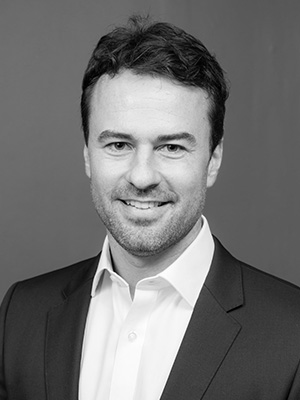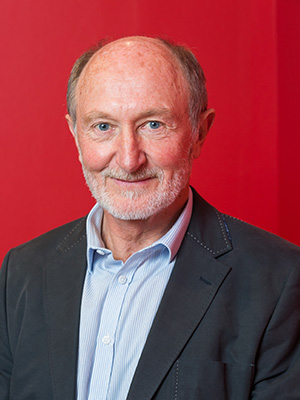
24 Mar Too early to inflation-proof your investment portfolio? Yes, it is.
As published in FA News on 16 March, 2021 by Pieter Hundersmarck
In a standoff between central banks and investors on whether high inflation is on its way, central banks seem to be losing, with bond yields rallying sharply and assets that protect investors against inflation soaring in March.
Flagship Asset Management fund manager Pieter Hundersmarck believes it is too early to gear up for a return of the damaging inflation levels last seen in the 1970s. High-quality businesses with convincing growth prospects will continue to dominate the Flagship asset allocation, says Hundersmarck.
He says the advent of inflation – and the monetary tightening that follows it – has traditionally been the destroyer of bull markets, so it’s logical that market participants would worry about it. As the chart below shows, the fact that US inflation has struggled to rise above two percent for nearly a decade means that, for many, the day of reckoning should be around the corner.

He says: “From our perspective, it’s easy to see how the recent surge in energy and agricultural prices – largely a correction of the pandemic supply and demand imbalances – will stoke inflation this year.” He also notes how the knock-on effects of energy will impact global trade patterns, for example, shipping costs and tightening in supply chains. These factors will also lead to an uptick in the pricing of manufactured products. “There is no doubt that these phenomena will feed into global consumer price indices and result in headline inflation,” he says.
However, for long-term, meaningful increases in price levels that feed prolonged increases in the consumer price basket, he says, there would need to be more than just cyclical moves in food and energy. “Both of these are temporary in nature and will normalize,” says Hundersmarck. “Of far more consequence is the continued deflationary impact of global production processes (due to technology) and the geographies used for this production (mainly China).”
Regarding the former, the impact of new production and manufacturing processes due to technological change is enormously deflationary, and the downward pressure on prices is amplified by the increasing use of automation and robotics. This shifts spend away from labour in favour of capital. In China and increasingly Vietnam, the enormous scale of technologically-driven operations in these geographies massively augments the deflationary effect.
“For now, despite the recent uptick in input prices, we still believe the deflationary effects outweigh the inflationary ones.” He expects only a moderate increase in inflation this year.
There have been three major forces keeping a lid on inflation over the past ten years. The first is low economic growth. The global financial crisis caused central banks to prop up an enormous number of assets that otherwise would have been liquidated, which in turn would have caused enormous short-term harm to economies. This in turn led to a zombie-like economic recovery post the GFC and an enormous rise in asset inflation due to the open market purchases and the low interest policy followed by the Fed and copied by the world’s central banks. The second is the rate of technological change and the low-cost geographies used for manufacturing. Says Hundersmarck: “Think of this as an enormous global efficiency program that has led to minimal tightness in supply, coupled with low global demand. Inflation doesn’t manifest in this type of environment without large growth surprises, which we don’t foresee.”
The Fed has been clear that it does not expect inflation to become a structural headwind and has indicated that its focus will remain on supporting asset prices, and importantly, supporting the debt underpinning those asset prices. Chairman Jerome Powell has intimated several times that they are aware that the foundation beneath global asset prices remains vulnerable to swift changes in interest rates. As such, Hundersmarck believes meaningful and persistent inflation would need to be on the horizon before the Fed decided to use monetary policy tools to curb it.
Although Flagship Asset Management doesn’t expect inflation to become entrenched in the global economy any time soon, it has taken a position in commodities (gold specifically, which traditionally acts as a hedge against inflation expectations), as well as copper, which Hundersmarck has very positive views on. “While this only accounts for 10% of the flexible strategies that we manage, the impact of this ten percent can be meaningful.” He adds that the asset manager’s portfolios are designed to thrive in a variety of outcomes, so the fund managers wouldn’t take a more meaningful stance unless they truly believed the current bout of inflation was to become more long-term in nature.
For Flagship to inflation-proof their portfolios in earnest, global economic growth expectations would have to lift materially. “This is the only way we would see large increases in demand for the various factor of production leading to a tightness that lifts prices and results in entrenched inflation,” says Hundersmarck.
In that event, he would load up on commodities, inflation-linked bonds, and high-quality companies that can pass through inflationary pressures through higher pricing.
About Pieter Hundersmarck:
Pieter is a fund manager and member of Flagship’s global investments team.
Pieter has been investing internationally for over 13 years. Prior to Flagship, he worked at Coronation Fund Managers for 10 years in the Global and Global Emerging Markets teams, and also co-managed a global equities boutique at Old Mutual Investment Group. Pieter holds a BCom (Economics) from Stellenbosch University and an MSc Finance from Nyenrode Universiteit in the Netherlands.



















